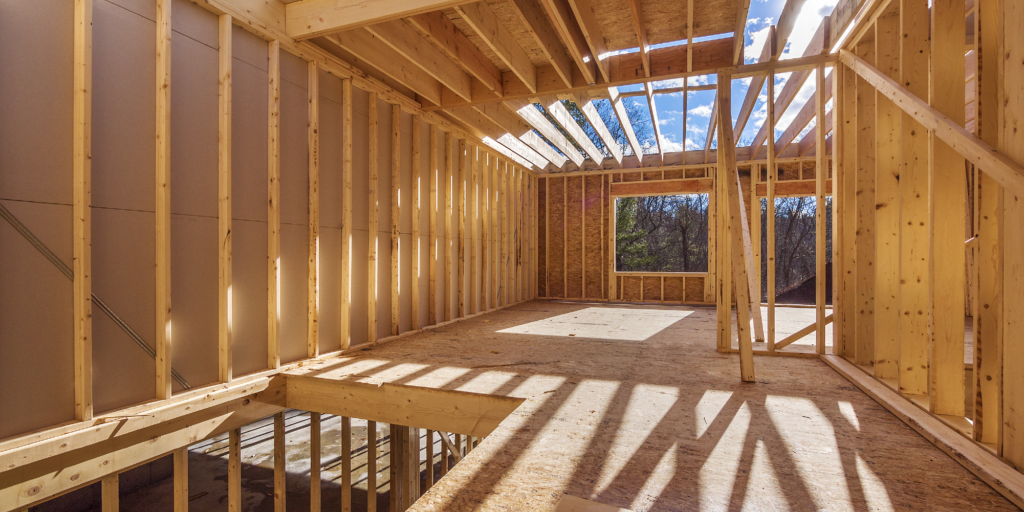— 8 min read
Contractor’s Guide to the AIA G701 Change Order
Last Updated Dec 13, 2023

Construction projects can be very unpredictable: Owners can change their minds, or unforeseen issues may come up. To avoid rewriting an entire contract, a change order gives both parties the ability to make changes as they come up. The American Institute of Architects (AIA) provides the AIA G701 Change Order form, a standardized form to simplify this process. It is commonly used together with other AIA documents as part of a standard application for payment.
This is a guide to each section of the AIA G701 Change Order.
Contents
Table of contents
What is a change order in construction?
A change order is a document that changes the scope of work in the contract. It can either add items to the scope of work, or reduce it.
The scope of work is the part of the construction agreement that defines the specific work, materials, and/or services under the contract. The scope of work lists all of the specific tasks and deadlines the contractor agrees to perform.
But things change all the time on a construction project. No one wants to rewrite the contract every time the owner wants to change something. This is where change orders come into play. If the owner wants to make any additions or deductions to a contractor’s scope of work, they can do it with a change order.
When all parties agree to a change order, it legally changes the scope of work under the original contract terms.
About AIA documents
The American Institute of Architects (AIA) is a professional organization that comprises over 90,000 licensed architects and other industry professionals. The AIA is mainly focused on education and advocacy for better practices in the construction industry. One main service that the institute provides is the standard AIA Contract Documents that they offer.
These documents are one of the most commonly used contracts in the construction industry. They cover all types of delivery methods and additional contract documents that may be needed on a construction project, and work with one another to set up the “AIA progress billing process.” They are drafted not only to be legal but fair and flexible to all parties.
The three most common documents to typically be used together as part of the pay application process include the AIA G701 Change Order form, the AIA G702 Application and Certificate for Payment, and the AIA G703 Continuation Sheet.
AIA G701-2017 Change Order fields
The AIA G701 form defines a change order as a written agreement used for implementing changes in the work that describes the terms of the changes, the adjusted fixed contract sum or Guaranteed Maximum Price (GMP), and the adjusted time for performance. That’s a fancy way of saying it describes how the work will change, how much the changes cost, and how much time the work will add.
AIA G701 Part I: Project information
This top section of the AIA G701 is where you’ll find all of the information concerning the parties and the construction project itself. If you are using the AIA Application for Payment, the same header information will apply.
- Project: Put the name of the project and the address or parcel number.
- Contract Information: Describe the work, materials, or services you are providing on the project. Include the date that the contract began.
- Change Order Information: Put the change order number (if it’s the first change order on this contract, put 01) and the date of the change order.
- Owner: Include the name and address of the project owner.
- Architect: Include the name and address of the project architect. If an architect is not part of the project, this might be the GC or project manager.
- Contractor: Put your name and address.
AIA G701 Part II: Changes to the contract
This section begins “THE CONTRACT IS CHANGED AS FOLLOWS.” This is where you should describe all of the changes to the original contract. Include all of the details of the proposed changes, and the cost of each change.
The more detail here, the better. It’s important to be specific in case a payment dispute arises later concerning the details of the work. The best practice here is to include any and all applicable attachments. Those can include drawings, specs, and any other documents or data to clearly indicate was is expected under the change order.
AIA G701 Part III: Determining the change in cost and time for performance
This section will provide all of the previous accounting values, and how the change in work will change the contract price. For the sections that have two or more options in parenthesis, cross-out the ones that don’t apply.
1. The original Contract Sum/GMP
This is the original contract amount for the work. This number will be the same throughout the project, no matter how many change orders you write. The AIA Change Order form works for both a fixed-price contract sum, or a guaranteed maximum price value.
2. Net change by previously authorized Change Orders
If this is the first change order on the project, this value will be 0. If it’s the second change order or after, then this field will be the total value of the previous changes. Remember, this can be either a positive or negative change, as some change orders are deductive change orders. Do not include any changes that were made through a Construction Change Directive, unless all parties later agreed to the change and recorded it as an official change order.
3. The Contract Sum/GMP prior to this Change Order
Simply add the two lines above this one. This figure is the total of the original contract sum and the net change by previously authorized change orders. If you have the previous change order handy, the amount in this section will match the “new Contract Sum” from that document.
4. The Contract Sum will be increased/decreased/unchanged by this Change Order in the amount of
This is where the total cost of the current change order is written. This can be either a positive or negative change. Sometimes, it may not change the costs at all. Regardless, this should match the price that the owner or architect agreed upon.
5. The new Contract Sum/GMP including this change order
Add up (or subtract) the two previous lines. This is the new total contract sum or GMP of the contract after accounting for the current change order.
6. Contract Time will be increased/decreased/unchanged
Here, you’ll need to add how the change order will affect the performance time (in number of days). In other words, how will the changes affect the date of substantial completion? Will you finish sooner? Will the work take longer? Or will you still finish on time?
7. New date of Substantial Completion
Finally, once you determine the number of days that will be affected by the change order, add or subtract that from your contract’s date of substantial completion.
AIA G701 Part IV: Signatures section
A change order is basically an amendment to the original contract, so it should be signed by all of the relevant parties. It requires signatures from the contractor agreeing to the changes, and the owner and architect ordering the changes.
Also, for record-keeping purposes, the AIA G701 should also be printed out and signed three times. That way each party has an original, executed copy to clarify any issue that can potentially come up later on in the project.
How much does the AIA G701 cost?
A single, one-time-use editable document starts at $39.99. You can also order a 50 pack of G G701 documents for $129.99.
Another option — especially if you need a large amount of documents — is to purchase an annual 1-year AIA membership with unlimited access for $1,599.99.
The subscription includes:
- All AIA documents
- Editable legal language
- Online/offline editing options
- Custom document templates
- Variance checker
- Frequently used clause library
- Share and track changes for review
- Unlimited document access and finalizations
Always document everything on the job
In the construction industry, the work you complete isn’t nearly as important as work you document. Always keep proper records of approved change orders to ensure that you get paid what you’ve earned. If you don’t have one already, a document retention strategy can help you save money.
The AIA G701 requires a fair amount of accounting and documentation to be sure that the numbers match up with everyone else’s. However, there are a few benefits of using a standardized form. They can be easily cross-referenced, and they keep everyone on the same page. When everyone is communicating well, change orders and payment applications can be approved quickly.
Categories:
Tags:
Written by
Alex Benarroche
25 articles
Alex Benarroche serves as Associate Counsel for Procore. His legal expertise includes construction, contracts, business, and intellectual property. Alex is bilingual in English and Spanish. He earned a J.D. from Loyola University College of Law and an M.S. in Intellectual Property and Internet Law from the University of Alicante in Spain. Originally from South Florida, Alex has called New Orleans home since 2003.
View profileExplore more helpful resources

Successfully Navigating Change Management in Construction
Change management in construction refers to any alteration to the original scope of work after the project has commenced. Whether the changes are simple or complex, they often affect a...

Construction Change Directives (CCD): How to Navigate Forced Account Work
Throughout the life of a construction job, there are typically numerous alterations made to the project specs. Typically, these changes are made via change order. However, when there is a...

How Change Orders Work in Construction
Completing a change order correctly minimizes risk, improves the chances of approval, and helps contractors get paid faster. The article contains information on how to fill out a change form,...

Request for Change Orders: Adjusting the Contract Scope
A change order is an agreement made during the course of a job that alters one of three things: the cost, the scope, or the schedule. But before a change...
